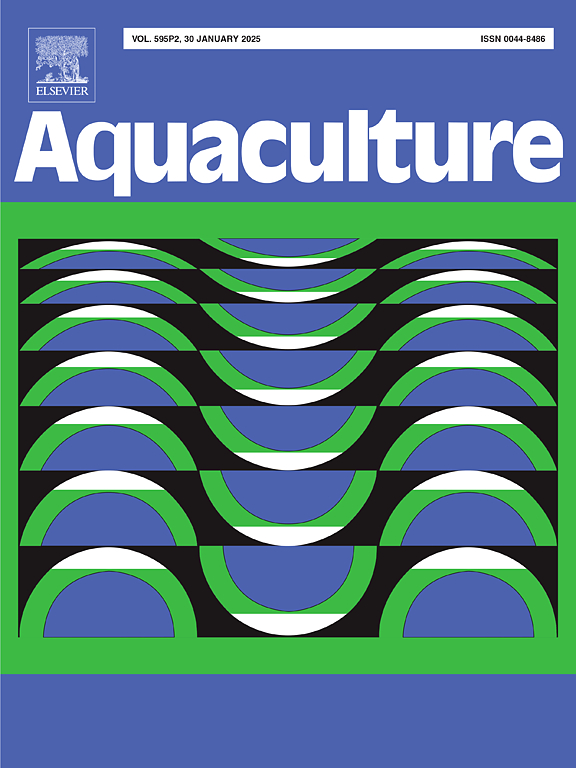Growth and survival of larvae of the threatened estuarine clam, Polymesoda arctata, under different hatchery conditions
IF 3.9
1区 农林科学
Q1 FISHERIES
引用次数: 0
Abstract
The estuarine clam Polymesoda arctata is one of the most important artisanal fisheries mollusks in the Caribbean Sea and is currently threatened by overexploitation and habitat loss. In order to provide a basis for aquaculture production of this species as a tool for its conservation and sustainable use, the growth and survival of its embryos and larvae were evaluated under different hatchery culture conditions. An embryo culture experiment was conducted at different incubation densities (1, 5, 10, or 15 zygotes mL−1). In addition, five larval culture experiments were performed testing different culture densities (1 or 5 larvae mL−1), food rations (20 or 40 cells of Isochrysis galbana μL−1 d−1), temperatures (25, 27, or 29 °C), salinities (5, 15, or 20 ppt), and water exchange (total or partial, every 48 h). Density affected the survival and growth of embryos, with the highest values observed at intermediate densities. Density, food ration, and water exchange did not affect larval survival but did affect their growth. Growth was higher in larvae maintained at low density levels, low food rations, and with total water exchange. Larvae maintained at intermediate and high temperatures also showed higher survival and growth rates. Finally, medium and low salinities favored larval survival, while intermediate and high salinities benefited growth. The high average values of survival (50 %) and growth rate (9 μm d−1) obtained in this study, along with reaching the competent larval stage in just 11 days, allow us to affirm that this clam has a high potential for hatchery production, especially when maintained at intermediate or low culture densities (5 zygotes per mL−1 and 1 larva per mL−1), low food rations (20 cells of I. galbana μL−1 d−1), intermediate to high temperatures (between 27 and 29 °C), intermediate salinity (15 ppt), and with total water exchange. This work lays the foundational work framework for larval production of P. arctata in hatcheries, a crucial step for its cultivation and restocking efforts.
求助全文
约1分钟内获得全文
求助全文
来源期刊

Aquaculture
农林科学-海洋与淡水生物学
CiteScore
8.60
自引率
17.80%
发文量
1246
审稿时长
56 days
期刊介绍:
Aquaculture is an international journal for the exploration, improvement and management of all freshwater and marine food resources. It publishes novel and innovative research of world-wide interest on farming of aquatic organisms, which includes finfish, mollusks, crustaceans and aquatic plants for human consumption. Research on ornamentals is not a focus of the Journal. Aquaculture only publishes papers with a clear relevance to improving aquaculture practices or a potential application.
 求助内容:
求助内容: 应助结果提醒方式:
应助结果提醒方式:


